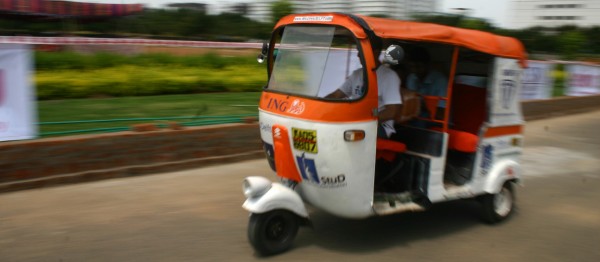Blog
Case Study 2: Hybrid Autorickshaw

“Mobility in the Base of the Pyramid”.
Facts
Client: ENVIU (Project leader) & Sponsors: TUDelft, ING, and STuD.
Design & Engineering: Datta P. (Team leader), Peters V. (Technical Leader), Mejia J.R. (Strategic design & Business leader), Kuday M. (Financial Manager), Ouwehand P. (Technical Development), Fransman J. (Technical Development), Patil S. (Technical Development), and Sable S. (Technical Development).
Support team: Vastbinder B. & Blom E. (DCE Delft Centre for Entrepreneurship)
Project date & place: 2008 – 2009 The Netherlands & India.
Design Thinking
Javier Ricardo Mejia Sarmiento
Context mapping (part 5): the shaving experience of men
 As a design researcher at PeopleCare Inc (a fictitious company), a consultancy that was hired by the company Body World to do a context-mapping study. Body World inc., a manufacturer of household goods, wants to develop a human-centered innovative concept for body care products. Body World’s purpose with the study is to get to know their future users more clearly, and to generate directions, ideas and concepts for new products and/or services.
As a design researcher at PeopleCare Inc (a fictitious company), a consultancy that was hired by the company Body World to do a context-mapping study. Body World inc., a manufacturer of household goods, wants to develop a human-centered innovative concept for body care products. Body World’s purpose with the study is to get to know their future users more clearly, and to generate directions, ideas and concepts for new products and/or services.
Case study 4: Twingo 2015 a community car concept
Client: Renault (Academic Project)
Design & Engineering team: Mejia J.R. (Strategic/Industrial design), & Kooistra M. (Industrial/Engineering design)
Project date & place: 2007 The Netherlands.
Key words: Mobility, Car design, Strategic Design, New Product Development.
Methods used: Vision in Product design, Future scenarios, Personas, Product deconstruction, Brainstorming, and Interaction design.
Business mapping (part 1): Competitor analysis
In the following graph four different levels of competition are displayed, with a decrease between high impact in the first level and lower impact in the fourth level. It is an example of competitor analysis on the project: From A to green a future vision of coachworks


